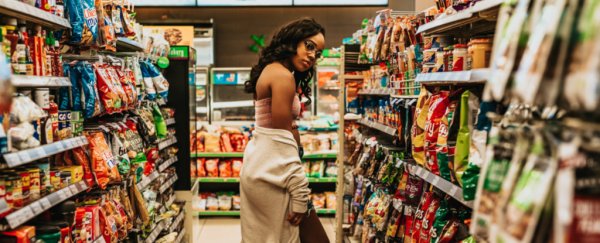Scientists have mapped out how choice overload works in the brain, showing how our minds can back off from making a decision if the number of options gets too big.
This kind of indecision has been noted in previous studies, but this new research identifies the areas of the brain that help us make a judgement between making a choice or not – specifically the anterior cingulate cortex or ACC (where we weigh benefits) and the striatum (where we determine value).
When 19 volunteers were given a choice of landscape images to print on a t-shirt or a mug, activity in these two brain areas increased as the number of options went up, according to readings from an fMRI machine. However, once the choice of pictures went above 12, activity started trailing off again.
The scientists say this shows how the striatum and ACC interact – weighing the potential for reward (finding the perfect picture to print) against the amount of work it's going to take to reach that reward (sifting through dozens of choices).
"The idea is that the best out of 12 is probably rather good, while the jump to the best out of 24 is not a big improvement," says one of the researchers, Colin Camerer from the California Institute of Technology.
The same brain activity wasn't shown when the subjects were asked to merely browse the images, the researchers report, demonstrating how the brain looks for a sweet spot between mental effort and potential reward.
Don't think 12 is the magic number for everything from lunch menus to car colours though – there are a lot of different factors at play, including individual characteristics, how great the reward is, and how difficult it might be to sift through the choices.
Camerer estimates the perfect number of choices might be between 8 and 15, and says there's a lot of room for future research. At least we now know more about how the brain makes these calculations.
You can think of the AAC as asking the brain about the cost vs benefit of any particular action. The striatum, meanwhile, asks another question: will the benefit or reward be as good we're hoping for? They're both key players in motivation and decision-making.
This research stretches almost 20 years – in 2000, scientists ran a famous jam study where shoppers were either faced with 24 samples or just 6 samples. Study participants were more likely to browse the choices with 24, but more likely to make a purchase with 6.
In 2018 we're still trying to work out why that's the case – and as we're still constantly discovering new details about the way the brain works, it's going to take a while to piece it all together. A whole host of factors come into play, including how hungry we are.
One potential area for future research is figuring out how exactly the brain measures mental effort: finding out what combination of choices and thought processes has to be reached before our minds decide it's just not worth mulling it over any more.
"What is mental effort? What does thinking cost? It's poorly understood," says Camerer.
The research has been published in Nature Human Behaviour.
